BU r esearch, (led by me, Dr Paul Hartley), was recognised at UK Kidney Week in Liverpool last week. We were invited to speak about our fruit fly model of human renal disease, work that has been variously supported by grants from the British Heart Foundation and Kidney Research UK. The conference was an excellent opportunity to showcase the model and highlight our current collaborations with consultant-scientists based at Great Ormond Street Children’s Hospital as well as a number of different groups at the University of Bristol, the University of Osnabruck in Germany, Harvard Children’s Hospital and the University of Edinburgh. The research work is based in Dorset House labs and is supported by a wide network of talented people within BU as well as our undergrad and post-grad students.
esearch, (led by me, Dr Paul Hartley), was recognised at UK Kidney Week in Liverpool last week. We were invited to speak about our fruit fly model of human renal disease, work that has been variously supported by grants from the British Heart Foundation and Kidney Research UK. The conference was an excellent opportunity to showcase the model and highlight our current collaborations with consultant-scientists based at Great Ormond Street Children’s Hospital as well as a number of different groups at the University of Bristol, the University of Osnabruck in Germany, Harvard Children’s Hospital and the University of Edinburgh. The research work is based in Dorset House labs and is supported by a wide network of talented people within BU as well as our undergrad and post-grad students.
Category / Research communication
Prof. Sara Ashencaen Crabtree – My Publishing experience…
 On Wednesday 28th June, the Writing Academy will be hosting a Lunchbyte session with Sara Ashencaen Crabtree. During the session Sara will talk about her personal publishing experience, her approaches to research and writing, her tips on developing a publication strategy, working with co-authors, reviewers and editors. She will talk about all types of publishing drawing on personal experience, focusing on international reach.
On Wednesday 28th June, the Writing Academy will be hosting a Lunchbyte session with Sara Ashencaen Crabtree. During the session Sara will talk about her personal publishing experience, her approaches to research and writing, her tips on developing a publication strategy, working with co-authors, reviewers and editors. She will talk about all types of publishing drawing on personal experience, focusing on international reach.
Aims:
- Developing a Publication Strategy
- Dealing with Co-Editors, Reviewers & Editors
- International Reach
BU posters at international midwifery conference
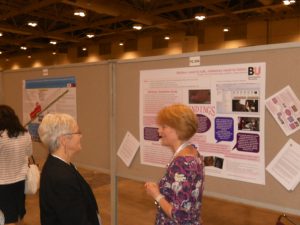 BU academics from the Faculty of Health & Social Sciences had a strong presence at the International Confederation of Midwives (ICM) in Canada this lunch time. They presented four separate academic posters today at the ICM conference in Toronto. First, Dr. Alison Taylor presented her poster ‘Mothers need to talk, midwives need to listen: Insights from breastfeeding mother’s video diaries’. Secondly, Sara Stride and Dr. Sue Way presented their poster on ‘UUPP Study: Updating the Understanding of Perineal Practice at the time of birth across the United Kingdom’.
BU academics from the Faculty of Health & Social Sciences had a strong presence at the International Confederation of Midwives (ICM) in Canada this lunch time. They presented four separate academic posters today at the ICM conference in Toronto. First, Dr. Alison Taylor presented her poster ‘Mothers need to talk, midwives need to listen: Insights from breastfeeding mother’s video diaries’. Secondly, Sara Stride and Dr. Sue Way presented their poster on ‘UUPP Study: Updating the Understanding of Perineal Practice at the time of birth across the United Kingdom’.
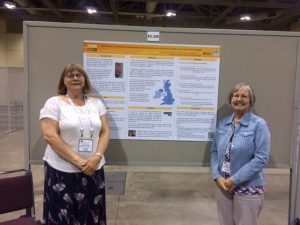 Prof. Vanora Hundley, Dr. Ann Luce (BU Faculty of Media & Communication), Prof. Edwin van Teijlingen and two students, Sofie Edlund and Sian Ridden also presented their poster on ‘Changing the narrative around birth: midwives’ views of working with the media’.
Prof. Vanora Hundley, Dr. Ann Luce (BU Faculty of Media & Communication), Prof. Edwin van Teijlingen and two students, Sofie Edlund and Sian Ridden also presented their poster on ‘Changing the narrative around birth: midwives’ views of working with the media’. 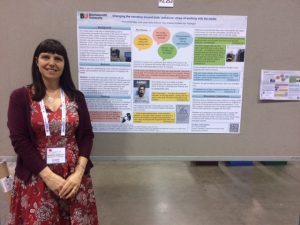
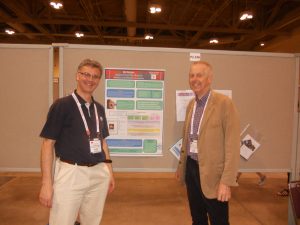 And, last but not least, Prof. Vanora Hundley and Prof. Edwin van Teijlingen also contributed to a poster produced by Dr. Andrew Symon and colleagues from across the UK: ‘Midwifery-led antenatal care models: Mapping a systematic review to an evidence-based quality framework to identify key components and characteristics of care’.
And, last but not least, Prof. Vanora Hundley and Prof. Edwin van Teijlingen also contributed to a poster produced by Dr. Andrew Symon and colleagues from across the UK: ‘Midwifery-led antenatal care models: Mapping a systematic review to an evidence-based quality framework to identify key components and characteristics of care’.
Sandcastles, trivialising science?
Most scientists agree that we have an image problem. This is serious at a time when research is at a premium to inform decision-making as argued so beautifully by Mark Henderson in The Geek Manifesto. We have a new generation of skilled science communicators on television today like Brian Cox, Jim Al Kalil, Alice Roberts and Iain Stewart to name but four and the quality and availability of science reporting has increased dramatically with the digital age. But the focus remains on discovery, the easy or sexy headline and therefore often on the trivial. Complex more nuanced, incremental stories are more often than not ignored. Every publically funded researcher is under pressure to engage the public and to increasingly justify what they do as part of the social contract with the public which funds them. For example, almost all funding in the UK requires statements now about pathways to engagement, but with this focus there is an ever present risk of simply pandering to the trivial and the easy as researchers seek publicity. It is something that I have been accused of myself.
The month of June is here which means for me the inevitable phone call to write something about building the perfect sandcastle. Professor Sandcastle, or the Sandcastle Boffin, was born in the summer of 2004 when I innocently became involved in a bit of summer ‘fluff’ for a holiday company. They wanted a formula for the perfect sandcastle. I obliged and the result caused a small unexpected media frenzy. The formula made it into the tabloids, was reported across the broadsheets and was a perfect regional story for radio and local television that summer. Much to my embarrassment I found myself portrayed as the Sandcastle Boffin. All was light hearted except for a barbed comment in the Independent, my newspaper of choice at the time, which cut deep: ‘haven’t they got anything better to do?’ ‘Yes of course I have, but you’re not interested in what I normally do’ I might have replied. The barb of triviality stuck fast.
The thing about the sandcastle story is that it would not die, despite the fact that the original research was never worthy in my view at least of publication. The following May I started to receive messages ‘we were so impressed by what you did for sandcastles last year can you . . .’ I was asked to create equations for love, happiness and luck. I turned most of them down but the idea of the ‘science equation as a’ tool was firmly embedded in a new generation of PR consultants. An appearance on the BBC Coasts programme with a linked session at the Cheltenham Science Festival helped cement the sandcastle connection, along with a slow but steady request for articles and radio interviews over the years. Most summers don’t pass without a request of some sort, nor has this one [http://theconversation.com/how-to-build-the-perfect-sandcastle-according-to-science-79600].
I have always delivered something when requested, seeing it as part of my remit as a modern academic to engage with the public slipping in messages about geology and earth history at every turn. I have resisted feelings of rancour when my real research has got less publicity remaining for the most part philosophical; if the public want fluff let them have it, better something than nothing, right? In truth it has done me no harm. The original interest gave me media training like no other and BU likes to remind people of its golden sands. It helped me as an academic appreciate the power and pitfalls of the media and the need for the sound bite and money shot in presenting more serious and challenging stories. Despite this the barb still twists; I am not just trivialising my academic discipline of sedimentology that I care deeply about? Is this not an ever present risk as we strive as academics for more public engagement? It is easy for us to write into funding pitches that we will do school events, give popular talks, create websites, attend and run festivals but does this really engage the public in the value and power of research? Are we not just feeding the media-machine with yet more trivia in lip-service to our funding aims? I have no idea whether my work on the perfect sandcastle over the years has made any real difference, it is impossible to quantify in terms of output. The truth is that measuring the consequences of engagement is hard and often undertaken post hoc. I am left without the answers but a gut feeling that is it better to show that science is all around us even in the humble sandcastle however trivial this may seem, than simply sit aloof concerned only about the more serious science stories that we may occasionally have to peddle.
How to build the perfect sandcastle – according to science
Whether we prefer water sports or relaxing with a good book, the humble sandcastle is often a seaside must. But what’s the secret to building a majestic sandcastle that will withstand the tide of time? Luckily, there’s a scientific formula for that.
It all started back in 2004, when a holiday company asked us to investigate the question. As a sedimentologist, someone who studies fragments of rock, I began pondering what kind of beach would work best for castle building. To find out, I compared the sand from the ten most popular beaches in the UK at the time. Though in truth any sandy beach will do, Torquay came out top with its delightful red sand, closely followed by Bridlington, with Bournemouth, Great Yarmouth and Tenby tied in third. At the bottom of the league was Rhyl.
Having selected a beach one has to find the perfect spot. Now this is a question of taste rather than hard rules. Some might prefer a spot close to the car park with easy access when the rain arrives while others might want to stay next to a cafe. Others yet might hanker after the secluded fringes of the beach, perhaps sheltered by natural promontories of rock that keep the biting wind at bay.

averoxus/wikipedia, CC BY-SA
Now a castle should be a symbol of military strength, but to stand proud one needs strong sand. The strength of sand depends on the properties of its individual grains and on the water between them. The more angular the grains, the better they will lock together. The more a grain is transported the more rounded it becomes. Microscopic shell fragments work well in this regard. The finer the grains the more they hold the water. And water matters.
Too much water and your sand will flow, too little and it will crumble. You need to get it just right and your castle will stand proud and last. It’s all down to the surface tension of water – the thing that gives the “meniscus”, or skin, to a glass of water and holds down that glass when placed on a wet bar top. The film of water between individual sand grains is what gives sand its strength, too much and it lubricates one grain over the other, but just right and it binds them strong.
The magic formula
Now the experimentation we did suggested that the perfect sandcastle requires one bucket of water to eight buckets of dry sand. Or if you want the magic formula: Water = 0.125 x Sand. So assuming that you don’t have any science gear with you, then you are looking for a spot close to the high tide line – usually marked by a line of seaweed and flotsam – and the low tide line where sand is still visibly wet and the waves are close. But remember that this will change as the tide comes and goes during the day.

My next tip refers to quality of your tools. In my experience there is a direct correlation between the age of the builder, spade size and the speed at which boredom sets in. Adult helpers find the smallest spade nothing but frustrating, and while young assistants might aspire to use the biggest spade, it is often too big to handle. A selection of tools will keep the workforce in harmony. The bucket also has to be the perfect size and shape. The best buckets are the simple round ones – not the ones with the fancy turrets which when turned out produce a castle in itself. A round bucket will allow you turn out countless towers and architectural features. A single bucket can be turned out several times to create a large mound from which you carve an amazing tower.
As you build, spare a thought to the story, not just of the castle one is building with its tales of derring-do, but also the story of the sand itself. Each grain is a fragment of rock and contains a story of relict mountains, ancient rivers, dinosaur-infested swamps and seas, of past climates and events which tell the amazing story of our planet. The red sand of Torquay once blew in giant sandstorms, as the area was once part of a desert far greater than that of the Sahara. The sand at Bridlington or Great Yarmouth tells a tale of giant ice sheets and drowned lands below the North Sea.
![]() My next tip refers to size. Yes, size matters – at least in the game of sandcastles. The modest castle with perfect towers, battlements and moat is ok, but it is the huge castles which break the beach horizon that inspire awe and wonderment in people that pass by. Think big! Pebbles, shells, driftwood fragments and feathers all enhance a castle. And let’s face it: a castle is about being seen. And although there may be science behind the humble sandcastle, don’t forget to have fun building it.
My next tip refers to size. Yes, size matters – at least in the game of sandcastles. The modest castle with perfect towers, battlements and moat is ok, but it is the huge castles which break the beach horizon that inspire awe and wonderment in people that pass by. Think big! Pebbles, shells, driftwood fragments and feathers all enhance a castle. And let’s face it: a castle is about being seen. And although there may be science behind the humble sandcastle, don’t forget to have fun building it.
Matthew Robert Bennett, Professor of Environmental and Geographical Sciences, Bournemouth University
This article was originally published on The Conversation. Read the original article.
A day in the life of a smart-city commuter – and why it’s not so far from reality
The alarm on your smart phone went off 10 minutes earlier than usual this morning. Parts of the city are closed off in preparation for a popular end of summer event, so congestion is expected to be worse than usual. You’ll need to catch an earlier bus to make it to work on time.
The alarm time is tailored to your morning routine, which is monitored every day by your smart watch. It takes into account the weather forecast (rain expected at 7am), the day of the week (it’s Monday, and traffic is always worse on a Monday), as well as the fact that you went to bed late last night (this morning, you’re likely to be slower than usual). The phone buzzes again – it’s time to leave, if you want to catch that bus.
While walking to the bus stop, your phone suggests a small detour – for some reason, the town square you usually stroll through is very crowded this morning. You pass your favourite coffee shop on your way, and although they have a 20% discount this morning, your phone doesn’t alert you – after all, you’re in a hurry.
After your morning walk, you feel fresh and energised. You check in at the Wi-Fi and Bluetooth-enabled bus stop, which updates the driver of the next bus. He now knows that there are 12 passengers waiting to be picked up, which means he should increase his speed slightly if possible, to give everyone time to board. The bus company is also notified, and are already deploying an extra bus to cope with the high demand along your route. While you wait, you notice a parent with two young children, entertaining themselves with the touch-screen information system installed at the bus stop.

from www.shutterstock.com
Once the bus arrives, boarding goes smoothly: almost all passengers were using tickets stored on their smart phones, so there was only one time-consuming cash payment. On the bus, you take out a tablet from your bag to catch up on some news and emails using the free on-board Wi-Fi service. You suddenly realise that you forgot to charge your phone, so you connect it to the USB charging point next to the seat. Although the traffic is really slow, you manage to get through most of your work emails, so the time on the bus is by no means wasted.
The moment the bus drops you off in front of your office, your boss informs you of an unplanned visit to a site, so you make a booking with a car-sharing scheme, such as Co-wheels. You secure a car for the journey, with a folding bike in the boot.
Your destination is in the middle of town, so when you arrive on the outskirts you park the shared car in a nearby parking bay (which is actually a member’s unused driveway) and take the bike for the rest of the journey to save time and avoid traffic. Your travel app gives you instructions via your Bluetooth headphones – it suggests how to adjust your speed on the bike, according to your fitness level. Because of your asthma, the app suggests a route that avoids a particularly polluted area.

Mr.tinDC/Flickr, CC BY-NC-ND
After your meeting, you opt to get a cab back to the office, so that you can answer some emails on the way. With a tap on your smartphone, you order the cab, and in the two minutes it takes to arrive you fold up your bike so that you can return it to the boot of another shared vehicle near your office. You’re in a hurry, so no green reward points for walking today, I’m afraid – but at least you made it to the meeting on time, saving kilograms of CO2 on the way.
Get real
It may sound like fiction, but truth be told, most of the data required to make this day happen are already being collected in one form or another. Your smart phone is able to track your location, speed and even the type of activity that you’re performing at any given time – whether you’re driving, walking or riding a bike.
Meanwhile, fitness trackers and smart watches can monitor your heart rate and physical activity. Your search history and behaviour on social media sites can reveal your interests, tastes and even intentions: for instance, the data created when you look at holiday offers online not only hints at where you want to go, but also when and how much you’re willing to pay for it.
Personal devices aside, the rise of the Internet of Things with distributed networks of all sorts of sensors, which can measure anything from air pollution to traffic intensity, is yet another source of data. Not to mention the constant feed of information available on social media about any topic you care to mention.
![]() With so much data available, it seems as though the picture of our environment is almost complete. But all of these datasets sit in separate systems that don’t interact, managed by different entities which don’t necessarily fancy sharing. So although the technology is already there, our data remains siloed with different organisations, and institutional obstacles stand in the way of attaining this level of service. Whether or not that’s a bad thing, is up to you to decide.
With so much data available, it seems as though the picture of our environment is almost complete. But all of these datasets sit in separate systems that don’t interact, managed by different entities which don’t necessarily fancy sharing. So although the technology is already there, our data remains siloed with different organisations, and institutional obstacles stand in the way of attaining this level of service. Whether or not that’s a bad thing, is up to you to decide.
Marcin Budka, Principal Academic in Data Science, Bournemouth University
This article was originally published on The Conversation. Read the original article.
What if opinion polls had been banned during this election?
When the prime minister, Theresa May, called a general election back in mid-April it was widely assumed she would easily win a large majority. The Conservative leader was far more popular than her Labour rival Jeremy Corbyn, and had a clear path back into No 10. We know this because the voters themselves told us – through opinion polls.
Six weeks later, the narrative is rather different. Labour’s manifesto has been praised while the Tory campaign has stuttered. Though a Conservative majority is still the most likely outcome, Corbyn appears increasingly confident while May seems more worried. But again this is largely down to the polls.
Like it or not, opinion polls are a staple part of an election campaign narrative. The media often obsesses over the slightest swings, enquiring of their readers and of party leaders: why, what have you done to increase or lose support?
But what if the media was not allowed to report on such polls during an election campaign? It might lead to a renewed focus on policy issues instead of “who is winning”. But banning polls may also hand even more power to political parties and media gatekeepers.
The influence of polls
Polls can drive campaigning style and substance. A leader buoyant in the polls will appear more confident and relaxed, so fulfilling the prophecies of the polls by delivering more assured performances. A leader lagging may seem edgy and nervous about answering questions, constantly second guessing how the media will replay their words and how the public will respond. This can lead to the sort of less assured performance that voters can find a turn off.
But an impact on substance matters. A struggling campaign will seek magic bullets to secure victory, which may simply mean candidates repeat slogans they think have traction, or focus on negative messages and image building exercises. As polls narrow, so does the debate, and candidates will completely avoid getting drawn into debates on policy detail that might obscure their message. Without the distraction of headlines based on polling, however, campaigns may feel more able to engage in serious and detailed policy debate.
Polls also influence voters. There has long been talk of polls creating a bandwagon effect, with voters flocking to support the party or candidate who is the most likely winner. This might explain the recent surge in Labour support, or the landslide victory in Scotland for the SNP in 2015. In both cases polls suggested the tide was moving one particular way, which can drive the decision making of undecided voters.
Alternatively poll predictions can mobilise or depress activism and voter turnout. If activists believe their party is doing well they may not feel the need to do as much door-knocking, while if a party is doing poorly they may feel disillusioned (though the reverse can be the case for both scenarios).
Similarly on election day voters can look at the polls and form the belief their vote does not matter or that they will get the outcome they want without making the effort to vote. Hence polls affect the nature and levels of engagement of an election campaign.
Polls provide transparency
But polls will be commissioned regardless of coverage, and many parties rely on pollsters to give an indication of how their campaign is going. If polls go unreported citizens will not be aware of why the focus of a campaign is shifting.
Voters may attribute a less than assured performance to poor poll performance and be sympathetic. Similarly they may see an act as desperate and driven simply by the polls and so grow cynical. Without the polls a vital sense of transparency of process is lost, and voters would only be able to speculate at what is driving campaign strategies.
So a campaign without polls could allow leaders to be themselves, unaware of the public reaction beyond that from the audience immediately in front of them. Leaders may also feel they must get more into the detail, persuading through the use of facts and costed promises that can be interrogated, rather than resorting to headlines or negative attacks in order to draw in the least engaged voters. Parties may also court activists more, in the hope that every leaflet or phone call can make a difference.
While many of these things happen in the course of a campaign anyway, the focus can be skewed by the erroneous notion that polls are shifting for or against a party. Comparing the performances of May and Corbyn one might attribute some of their performance style and communication strategy to perceptions of their relative standing in the polls.
All this relies on party leaders and strategists also being unaware of their standing with the public, however. And with pollsters in the business of making news and attracting corporate clients, it is hard to imagine an election truly without polls.
But what if polls were treated with greater caution and scepticism? If reporters were more clear about margins of error, or the difficulty of factoring in underrepresented groups, then both parties and citizens may not be so ready to be influenced by each percentage point change. In turn elections may be less negative, more substance focused and leaders could perform with fewer worries about the next day’s headlines.
![]() Perhaps reporting of polls simply needs to be better – not banned.
Perhaps reporting of polls simply needs to be better – not banned.
Darren Lilleker, Associate Professor of Political Communication, Bournemouth University
This article was originally published on The Conversation. Read the original article.
Back in the Women’s Room – WAN research seminar

Professor Ann Phoenix
On the 24 May the Women’s Academic Network (WAN) held their first public research seminar entitled ‘“Back in the Women’s Room”: Dialogues on gender-focused research’. This seminar, organised by Professor Sara Ashencaen Crabtree (in reference to the famous feminist novel The Women’s Room by Marilyn French), focused on research that had been either funded by WAN or were closely linked to WAN’s aims and interests. Accordingly 5 paper presentations were given by BU academics with a guest appearance by our founding member, Professor Heather Savigny of de Montford University, speaking on the topic of the hidden injuries to women in neoliberal academia.
A profoundly erudite keynote lecture was offered by our eminent speaker, Professor Ann Phoenix of the Thomas Coram Research Unit at the Institute of Education at UCL, who flew in from her secondment at the Helsinki University Collegium for Advanced Studies to attend the seminar. The day was completed by two successive 90 minute workshops, one given by Professor Phoenix on feminist intersectional research and the other being a fascinating, participative social dreaming workshop on women in academia, conducted by Dr Aanka Batta of the Faculty of Media & Communication (FMC). Professor Tiantian Zhang of SciTech gracefully closed the day.
There was good attendance by BU and external academics along with PGR. The seminar was seen to be enormously successful and received excellent evaluations from participants. However, while a thoroughly gratifying outcome (and hopefully the beginning of other such seminars) the main impact of the day was to be able to focus on issues of genuine relevance and concern to women (and male) academics through papers on gendered barriers to academic careers by Professors Ashencaen Crabtree and Chris Sheil. A paper on women knowledge workers and flexible working by doctoral candidate, Aleksandra Biernat, resonated with our awareness of the difficulties of negotiating masculinised workspaces as women. Drs Haana Osman and Lorraine Brown delivered a WAN-sponsored paper on UK Muslim women tourists. Professor Candida Yates followed with another sponsored research paper on perceptions and emotionality in the wake of Brexit – a most topical issue. Dr Stephanie Schwandner-Sievers gave an impressive account on the ambiguities of gender in post-War Kosovo. Finally, Professor Ann Hemingway et al. discussed their early work on Slow Professorship as a means of reclaiming deep scholarship – where synergies were found with colleagues from the Faculty of Management, who are also engaged in exploring this area. We were also really pleased that this work inspired such a strong response for further engagement with our colleagues across Faculties, where Professor Mike Wilmore, Dean of FMC was eager to continue discussions at a higher level.
The day provided a number of valuable opportunities for colleagues to explore gender as both an analytic framework, a subjective experience and as firmly embedded in ubiquitous contexts and daily social interactions. It provided an invaluable forum to examine the complexities, paradoxes and oppressions that form the problematic and bone of contention in gender politics – and in so doing privileged those vital areas of concern that otherwise too often remain unheard and unseen.
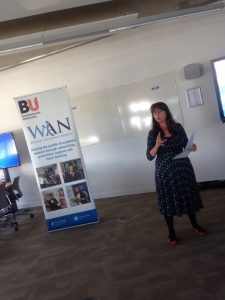
Professor Sara Ashencaen Crabtree
The NHS faces a staffing crisis for years to come

From August, nursing, midwifery and most allied health students will no longer have their tuition fees paid by the NHS, nor will they receive maintenance bursaries. This will undoubtedly affect the number of students opting to study these subjects. And it will negatively impact NHS England staffing levels in three years’ time.
Many nursing students are mature students and having their fees paid has been an incentive to study. At Bournemouth University, we have a large number of mature students who have a mortgage and dependent children, so they may be reluctant to take on more debt. Taking away the bursary could prevent many talented people from becoming tomorrow’s nurses, midwives, physiotherapists, occupational therapists and speech-and-language therapists, to name just some of the healthcare degrees that will no longer be funded by the government.
The Royal College of Nursing (RCN) confirms that nursing and midwifery student applications across England are down by 23% this year. This doesn’t necessarily mean that the places on these courses won’t be filled, as they are often oversubscribed, but it’s a worrying dip, nonetheless.
If the government – whoever they may be after June 8 – is serious about securing an NHS workforce for the future, they need to be serious about investing in it now.
Inventing new roles
There are over 55,000 EU nationals working as nurses and doctors in the NHS. As a result of Brexit, fewer nurses from the EU are applying for jobs in the NHS. And the RCN confirms that student nurse applications from EU citizens are down 7% this year.
New healthcare roles have been created in an attempt to counteract the changes to student funding and to Brexit, such as the new nursing associate role. A nursing associate is more junior than a registered nurse, but they can go on to become a registered nurse either by completing a degree-level nursing apprenticeship or by taking a shortened nursing degree at university.
The government has also expanded the range of apprenticeship schemes, such as nursing-degree apprenticeships and apprenticeships which support the development of advanced-practice nurses. But none of these initiatives is a quick fix.
In fact, with the introduction of the apprenticeship levy, introduced for all large organisations since April 2017, the government hopes to train 100,000 apprentices in the NHS by 2020. These apprenticeships will include nursing associates and healthcare assistants (a position below nursing associates). This means that all organisations, not just the NHS, who have an annual wage bill of £3m or more will have an apprenticeship levy of 0.5% of their total wage bill deducted to pay towards the government’s apprenticeships scheme. However, paying for a three-year degree apprenticeship by the NHS Trusts will far exceed what the levy will pay for.
Dire consequences
Nursing shortages will not just be bad for patients, they will be bad for nurses too. A study, published in JAMA, showed that a poor nurse-to-patient ratio can result in an increase in patient mortality and have a detrimental effect on the health and well-being of the nurse, leading to job dissatisfaction and more nurses quitting.
![]() The NHS cannot survive the continued and worsening workforce shortage and retain its reputation for high-quality patient care. So, unless incentives are introduced, such as fees paid for those with a first degree to enter these programmes at the postgraduate level, or assistance with childcare, or similar incentives that would encourage candidates to enter healthcare professions, the workforce crisis in the NHS can only continue to spiral out of control.
The NHS cannot survive the continued and worsening workforce shortage and retain its reputation for high-quality patient care. So, unless incentives are introduced, such as fees paid for those with a first degree to enter these programmes at the postgraduate level, or assistance with childcare, or similar incentives that would encourage candidates to enter healthcare professions, the workforce crisis in the NHS can only continue to spiral out of control.
Elizabeth Rosser, Acting Dean of the Faculty of Health and Social Sciences, Bournemouth University
This article was originally published on The Conversation. Read the original article.
How prehistoric water pit stops may have driven human evolution
Our ancient ancestors seem to have survived some pretty harsh arid spells in East Africa’s Rift Valley over five million years. Quite how they kept going has long been a mystery, given the lack of water to drink. Now, new research shows that they may have been able to survive on a small networks of springs.
The study from our inter-disciplinary research team, published in Nature Communications, illustrates that groundwater springs may have been far more important as a driver of human evolution in Africa than previously thought.

Redgeographics, CC BY-SA
The study focuses on water in the Rift Valley. This area – a continuous geographic trench that runs from Ethiopia to Mozambique – is also known as the “cradle of humanity”.
Here, our ancestors evolved over a period of about five million years. Throughout this time, rainfall was affected by the African monsoon, which strengthened and weakened on a 23,000-year cycle. During intense periods of aridity, monsoon rains would have been light and drinking water in short supply. So how did our ancestors survive such extremes?
Previously, scientists had assumed that the evolution and dispersal of our ancestors in the region was solely dependent on climate shifts changing patterns of vegetation (food) and water (rivers and lakes). However, the details are blurry – especially when it comes to the role of groundwater (springs).
We decided to find out just how important springs were. Our starting point was to identify springs in the region to map how groundwater distribution varies with climate. We are not talking about small, babbling springs here, but large outflows of groundwater. These are buffered against climate change as their distribution is controlled by geology – the underlying rocks can store rainwater and transfer it slowly to the springs.

SeaWiFS Project, NASA/Goddard Space Flight Center, and ORBIMAGE
We figured that our ancestors could have stayed close to such groundwater in dry times – playing a greater part in their survival than previously thought. When the climate got increasingly wet, groundwater levels would have risen and made springs more plentiful – feeding smaller rivers and leading to lakes becoming less saline. At this point, our ancestors would have roamed across the landscape free of concerns about water.
Life and death decisions
To test this idea, we embarked on a computer experiment. If the springs and water bodies are thought of as the rest stops, or service stations, then the linkages between can be modelled by computers. Our model was based on what decisions individuals would have taken to survive – and what collective behaviours could have emerged from thousands of such decisions.
Individuals were give a simple task: to find a new source of water within three days of travel. Three days is the time that a modern human and, by inference, our ancestors could go without drinking water. The harder and rougher the terrain, the shorter the distance one can travel in those vital three days.
We used the present landscape and existing water springs to map potential routes. The detailed location of springs may have changed over time but the principles hold. If our agent failed to find water within three days, he or she would die. In this way we could map out the migration pathways between different water sources as they varied through 23,000-year climate cycles. The map shows that there were indeed small networks of springs available even during the driest of intervals. These would have been vital for the survival or our ancestors.
The model also reveals movement patterns that are somewhat counter-intuitive. One would assume that the easiest route would be along the north to south axis of the rift valley. In this way, hominins could stay at the bottom of the valley rather than crossing the high rift walls. But the model suggests that in intermediate states between wet and dry, groups of people may have preferred to go from east to west across the rift valley. This is because springs on the rift floor and sides link to large rivers on the rift flanks. This is important as it helps explain how our ancestors spread away from the rift valley. Indeed, what we are beginning to see is a network of walking highways that develop as our ancestors moved across Africa.
Human movement allows the flow of gossip, know-how and genes. Even in modern times, the water-cooler is often the fount of all knowledge and the start of many budding friendships. The same may have been true in ancient Africa and the patterns of mobility and their variability through a climate cycle will have had a profound impact on breeding and technology.
This suggests that population growth, genetics, implications for survival and dispersal of human life across Africa can all potentially be predicted and modelled using water as the key – helping us to uncover human history. The next step will be to compare our model of human movement with real archaeological evidence of how humans actually moved when the climate changed.
So next time you complain about not finding your favourite brand of bottled spring water in the shop, spare a thought for our ancestors who may died in their quest to find a rare, secluded spring in the arid African landscape.
![]() This research was carried out in partnership with our colleagues Tom Gleeson, Sally Reynolds, Adrian Newton, Cormac McCormack and Gail Ashley.
This research was carried out in partnership with our colleagues Tom Gleeson, Sally Reynolds, Adrian Newton, Cormac McCormack and Gail Ashley.
Matthew Robert Bennett, Professor of Environmental and Geographical Sciences, Bournemouth University and Mark O Cuthbert, Research Fellow in Groundwater Science, Cardiff University
This article was originally published on The Conversation. Read the original article.
African springs shed light on history of human migration
New research published this week in Nature Communications, has shown how African springs helped to shape human evolution.
A unique combination of groundwater and agent based modelling has revealed insight into the importance of spring water in human evolution across East Africa.
By mapping springs and other water sources across the African landscape researchers have been able to model how our ancestors may have moved between water sources taking into account the energetic cost of the landscape.
More importantly, by modelling these springs through a simulated climate cycle they have shown how the springs were vital to human survival in the most arid of times. Springs acted as key hydro-refugia for our ancestors, a term first coined by one of the authors Tom Gleeson (University of Victoria).
As climate became drier the spring and water network became sparse and in reverse, during wet times, they became denser allowing widespread movement. Understanding this pattern of mobility and its variation with both climate and geological conditions would have impacted on the mixing of genes within our ancestral populations.
Groundwater currently provides nearly a third of the world’s population with drinking water. It is used for irrigation to produce the largest share of the world’s food supply and is a vital commodity, but this research shows that it may have also shaped our evolutionary history.
Mark Cuthbert (Cardiff University) who led the inter-disciplinary team that did the research said, “We found that the geology is really important in controlling how much rainfall gets stored in the ground during wet periods. Modelling the springs showed that many could still flow during long dry periods because this groundwater store acts like a buffer against climate change”.
Matthew Bennett (Bournemouth University) said, “What we are seeing is the movement of people across vast areas of land. You can think of springs as the service stations or rest stops along the way, where people would be drawn to get their vital water sources. Through our mapping we have found the routes on the current landscape by which our ancestors may have walked, like motorways, taking people from one water source to the next. This is another vital clue in understanding how these people migrated across the African continent, from water source to source, and how this may have impacted on gene flow and mixing.”
This explains the dispersal of people we have seen, as networks of springs have facilitated migration. We are able to see that there were geological reasons for migration, not just climate related reasons. The landscape was a catalyst for change in Africa.
The research was conducted by a collaborative team of academics from the Cardiff University, University of Birmingham, University College London, UNSW Australia, Bournemouth University, Rutgers University (USA) and the University of Victoria (Canada).
How electric car racing could one day challenge the spectacle of Formula One

Motor racing’s most glamorous event, the Formula One Grand Prix in the glittering tax haven of Monaco is just around the corner. It is 67 years since drivers first took on the famous, twisty roads through the principality on the south coast of France, but is age starting to creep up on the F1 scene? ![]()
Since the earliest Olympic Games, racing has been used to advance wheeled transport. It was in the Tethrippon, Keles and Apene events in Ancient Greece, that chariots were developed and the numbers of horses, foals and mules adjusted to provide optimum power and handling. Centuries later, in 1899, the French Renault brothers understood that city-to-city racing could help harness the very different horsepower of their new combustion-engined cars.
Today we use many F1 technologies on the road. Ferrari’s semi-automatic gearbox and the “flappy paddle” transmissions are now standard in many road cars. Shell and Total produced friction-reducing fuel additives, and tyres made by Goodyear, Michelin, Bridgestone and Pirelli have all benefited from F1 research. Williams Advanced Engineering created the technology behind the Kinetic Energy Recovery System (KERS) to be found in Volvo’s C30 Electric road car and the BMW i3 electric city car is the first to be constructed from carbon fibre-reinforced plastic, a technique pioneered in F1 by McLaren.
But while F1 has driven innovation that has made it to the car showroom, there is a risk it may fall behind by failing to embrace the key evolving trend in road car technologies. Could Formula E (FE), the fully electric vehicle street racing competition, end up being more relevant to the world’s major motor manufacturers?

One Tonne Life/Flickr, CC BY-NC-ND
Urban planning
This year, FE had its own race in Monaco, a fortnight before F1 arrived. According to Jean Todt, President of the Federation Internationale de L’Automobile (FIA), FE is the perfect showcase for new electric vehicle technologies; a device to promote the use of clean engine technology, especially in cities and towns.
It is in those urban settings that pollution is a major problem. Oslo banned diesel road cars for two days to combat rising air pollution while the Norwegian government intends to ban the sale of fossil fuel-based cars by 2025.
Others have similar intentions. India is considering a draft report recommending that all vehicles should be electric by 2032. China, where pollution in major cities can be devastating, is the largest electric vehicle market in the world. BYD Auto sold 507,000 cars last year and GAC Motor, another of China’s large motor manufacturers, intends to build 200,000 vehicles per year. Unsurprisingly, Alejandro Agag, founder and CEO of FE wants to expand the championship into China.
Agag recognised that the automobile industry’s focus on electric vehicles offered a different direction to most motor sports. He would appear to be right. FE already has an impressive line-up of contributing manufacturers, many of which have been familiar names in F1.
Brand awareness
FE cars currently use batteries supplied by Williams Advanced Engineering, a subsidiary of the Williams F1 Team. The Renault e.dams team has allowed Renault to demonstrate its FE pedigree with the all-electric TreZor concept car, which was one of the stars of the 2016 Paris Motor Show. McLaren Applied Technologies will supply all the championship’s new batteries from 2018. Jaguar, which was formerly in F1, has backed FE’s Panasonic Jaguar Racing team to showcase its future range of electric cars.
Other manufacturers, including current world F1 championship winning team Mercedes-Benz, are joining FE soon and even Ferrari, a cornerstone of F1 since the World championship started, is said to be interested.
BMW, which used to have a prominent position in F1 attained “Official Vehicle Partner” status by supplying electric utility vehicles for FE, including Safety Cars, Medical and Support Cars and the official Rescue Car. BMW will get further involved on track in the actual racing when it joins the FE grid in 2018 with the Andretti Team.
In 2017, Audi, which could have gone to F1, completely realigned its motor sport strategy after being dominant in sportscar racing. It became involved in FE with a factory-backed commitment to The Abt Schaeffler Audi Sport team. This fits Audi’s business strategy to produce new electric vehicles, particularly aimed at the Chinese market.

EPA/PETER FOLEY, CC BY
You might wonder why headline-grabbing US car maker Tesla hasn’t dipped its toe into FE. Well, Elon Musk’s firm has seen its Model S version P85+ chosen as the base car for the world’s first Electric GT Championship, which starts in a few months time.
So is F1 missing out? Certainly not financially. At the moment, the budgets involved in F1 remain much larger, but that should not be taken for granted if motor manufacturers continue to jump ship. The point has certainly been made that FE is attracting major companies for whom electric technology is becoming increasingly relevant, to the detriment of both F1 and Indycar.
It does seem unlikely that Formula e, as it stands, can truly compete with the decades of history and glamour associated with the combustion-engine machismo of F1. But in 2020, the FIA’s F1 engine rules are due to change and history shows that to justify the substantial investment, this will probably have to be for at least five seasons. The current 1.6-litre V6 600 horsepower hybrid turbo petrol engines, that gain an added 160 horsepower from their electrical recovery systems will be consigned to the scrap heap.
Will the FIA choose another hybrid engine configuration for F1 or could it too go more electric? Perhaps a path might even be laid for a fully electric F1 in later years? In any case, the FIA’s choice will be vital for the future of both F1 and FE. It will also be a strong signal of the pace of change which will dictate the types of cars we will all end up driving to the shops, in China, Norway and beyond.
Bruce Grant-Braham, Lecturer in Sport Marketing specialising in motorsport, Bournemouth University
This article was originally published on The Conversation. Read the original article.
Standing up for Science workshop in June

Calling all early career researchers- Sense about Science will be running a Standing up for Science media workshop this June.
The workshop will take place on Friday 30 June at the University of Warwick. This free to attend event is a great opportunity for early career researchers and scientists to learn how to make their voices heard in public debates about science.
Attendees will hear from scientists who have engaged with the media, learn from these distinguished scientists about how the media works, how to comment and what journalists expect from scientists. This is a free event and is open to all early career researchers and scientists- PhD students, post-docs or equivalent- in all sciences, engineering and medicine.
The deadline for applications is 14 June. You can find out more information here.
The previous workshop was held in Manchester in April. You can find out what attendees Jade and James thought of the workshop and view photos here.
If you have any questions please email Joanne from Sense about Science.
Press release INASP highlights BU research paper
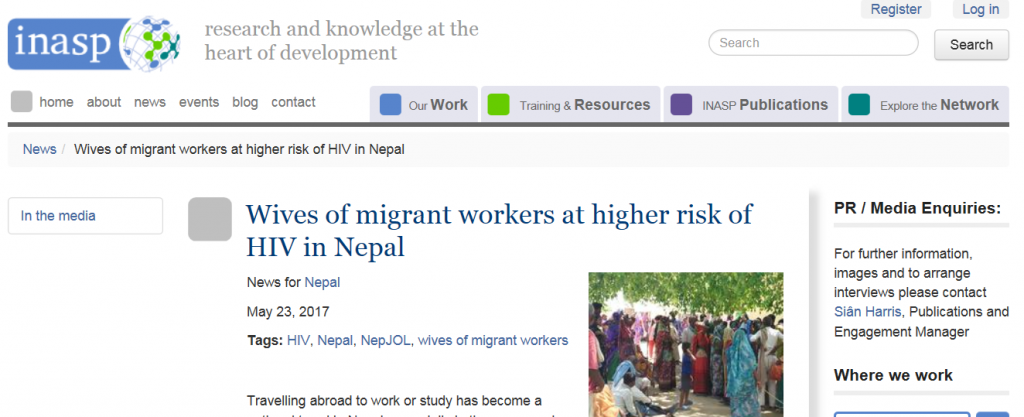 INASP, an Oxford-based organisation, aims to improve access to, and production and use of, research information and knowledge for sustainable development. Part of their approach is the Journals Online project which increases the accessibility and visibility of developing-country research. The Journals Online project includes a set of journals published Open Access in Nepal, know as NepJOL. On of the journals in the stable of NepJOl is the SAARC Journal of Tuberculosis, Lung Diseases & HIV/AIDS. Journals selected for inclusion on the Journals Online project must be:
INASP, an Oxford-based organisation, aims to improve access to, and production and use of, research information and knowledge for sustainable development. Part of their approach is the Journals Online project which increases the accessibility and visibility of developing-country research. The Journals Online project includes a set of journals published Open Access in Nepal, know as NepJOL. On of the journals in the stable of NepJOl is the SAARC Journal of Tuberculosis, Lung Diseases & HIV/AIDS. Journals selected for inclusion on the Journals Online project must be:
- scholarly in content, and contain original research;
- peer reviewed and quality controlled;
- able to provide all necessary content in electronic format (tables of contents, abstracts and PDFs of full text);
- published, managed and developed within their respective country.
Yesterday INASP selected a paper published late last year and co-authored by two Bournemouth University academics for a special press release. The press release can be found here! This press release highlights our recently published paper in the SAARC Journal of Tuberculosis, Lung Diseases & HIV/AIDS. Our paper ‘Knowing is Not Enough: Migrant Workers’ Spouses Vulnerability to HIV’ argues that despite having generally a good knowledge and awareness of HIV and risk associated with migration and HIV; migrants’ wives could not discuss sexual health issues with their husbands, thus increasing their vulnerability to HIV and other sexually transmitted infections [1].
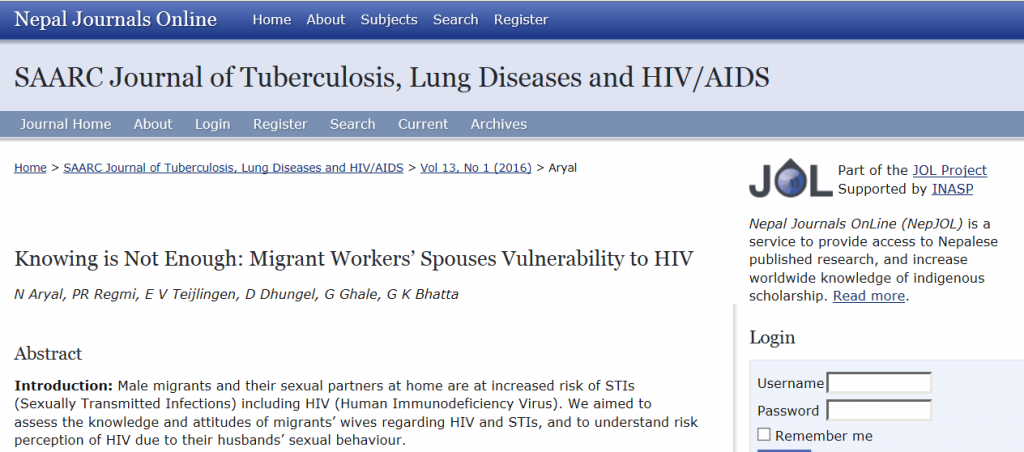 Dr. Pramod Regmi, Post-Doctoral Research in the Faculty of Health & Social Sciences is quoted in the press release as saying: “knowledge alone would not be sufficient to fight against the spread of HIV/STI among wives of migrant workers.” This paper is an addition to a range of papers on health and well-being of Nepali migrant workers produced by BU academics [2-6].
Dr. Pramod Regmi, Post-Doctoral Research in the Faculty of Health & Social Sciences is quoted in the press release as saying: “knowledge alone would not be sufficient to fight against the spread of HIV/STI among wives of migrant workers.” This paper is an addition to a range of papers on health and well-being of Nepali migrant workers produced by BU academics [2-6].
Prof. Edwin van Teijlingen
References:
- Aryal, N., Regmi, P.R., van Teijlingen, E., Dhungel, D., Ghale, G., Bhatta, G.K. (2016) Knowing is not enough: Migrant workers’ spouses vulnerability to HIV SAARC Journal of Tuberculosis, Lung Diseases & HIV/AIDS 8(1):9-15.
- Adhikary, P., Simkhada, P.P., van Teijlingen E., Raja, AE. (2008) Health & Lifestyle of Nepalese Migrants in the UK BMC International Health & Human Rights 8(6). Web address: www.biomedcentral.com/1472-698X/8/6.
- Adhikary P., Keen S., van Teijlingen E (2011) Health Issues among Nepalese migrant workers in Middle East. Health Science Journal 5: 169-175. www.hsj.gr/volume5/issue3/532.pdf
- Sapkota, T., Simkhada, P., van Teijlingen, E. (2014) Nepalese health workers’ migration to United Kingdom: A qualitative study. Health Science Journal 8(1):57-74.
- Simkhada, P.P., Regmi, P.R., van Teijlingen, E., Aryal, N. (2017) Identifying the gaps in Nepalese migrant workers’ health and well-being: A review of the literature, Journal of Travel Medicine 24 (4): 1-9.
- Aryal, N., Regmi, P.R., van Teijlingen, E., Simkhada, P., Adhikary, P., Bhatta, Y.K.D., Mann, S. (2016) Injury and Mortality in Young Nepalese Migrant Workers: A Call for Public Health Action. Asian-Pacific Journal of Public Health 28(8): 703-705.
Congratulations to Dr. Pramod Regmi now Visiting Faculty at Datta Meghe Inst. Med. Sci. [India]
 Congratulations to Dr. Pramod Regmi on his appointment as Visiting Research Fellow in International Health at Datta Meghe Institute of Medical Sciences which is part of Deemed University in Maharashtra, India. Dr. Regmi is currently Post-Doctoral Researcher and Early Career Researcher in the Centre for Midwifery, Maternal & Perinal Health (CMMPH).
Congratulations to Dr. Pramod Regmi on his appointment as Visiting Research Fellow in International Health at Datta Meghe Institute of Medical Sciences which is part of Deemed University in Maharashtra, India. Dr. Regmi is currently Post-Doctoral Researcher and Early Career Researcher in the Centre for Midwifery, Maternal & Perinal Health (CMMPH).
Over the past year FHSS has submitted several grant applications with academics based at Datta Meghe Institute of Medical Sciences. Moreover, we are running a joint BU-Datta Neghe project in Maharashtra on the health and well-being of Nepali migrant workers in India. This collaborative migration project was highlighted in the recent Festival of Learning India presentations in New Delhi. Dr. Regmi has published several papers on Nepali migrant workers and their health and well-being.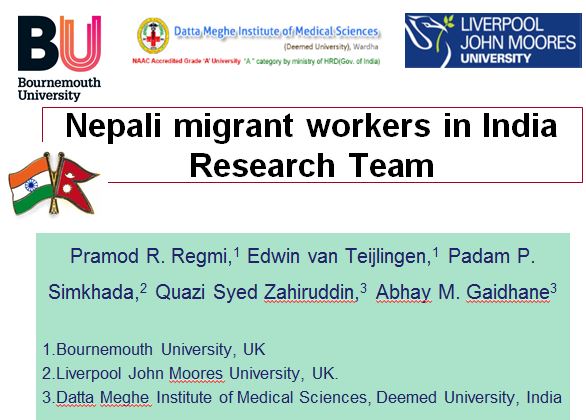
Well done!
Prof. Edwin van Teijlingen
CMMPH
Sign up to Piirus – your chance to win an Amazon Voucher
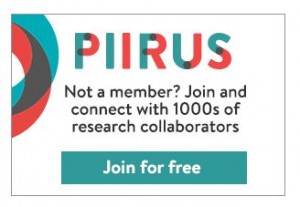 Names are the sweetest and most important sound in any language (Dale Carnegie)
Names are the sweetest and most important sound in any language (Dale Carnegie)
Researcher connectivity is always important but never more so than in a time of change.
One way is to register on Piirus – a free networking website where researchers worldwide can connect, collaborate, find the best jobs and access independent consultancy opportunities.
Make Connections – You’ll be part of a community of researchers who are looking to make connections with researchers around the world. You’ll have exclusive access to great minds. You’ll grow your network.
Be Global – Piirus is an international network with members from all over the world. So by becoming a member you’ll make interdisciplinary and international connections that will keep your research fresh and support your career in your institution and beyond.
Share you Expertise – You can quickly find and collaborate with people in the same field or researchers who can bring different perspectives and expertise from across disciplines and in different methodologies, to support your specialised projects.
Increase your Visibility – You can build a digital profile for you and your research making it visible to people around the world.
Engage with the blog – this month there is a thought-provoking article on academic inspiration
To promote use of this service at Bournemouth University, when BU signed up academics reaches 100 members, there will be a random draw for a £20 Amazon voucher.
Scientist James Lovelock visits BU’s Faculty of Science & Technology
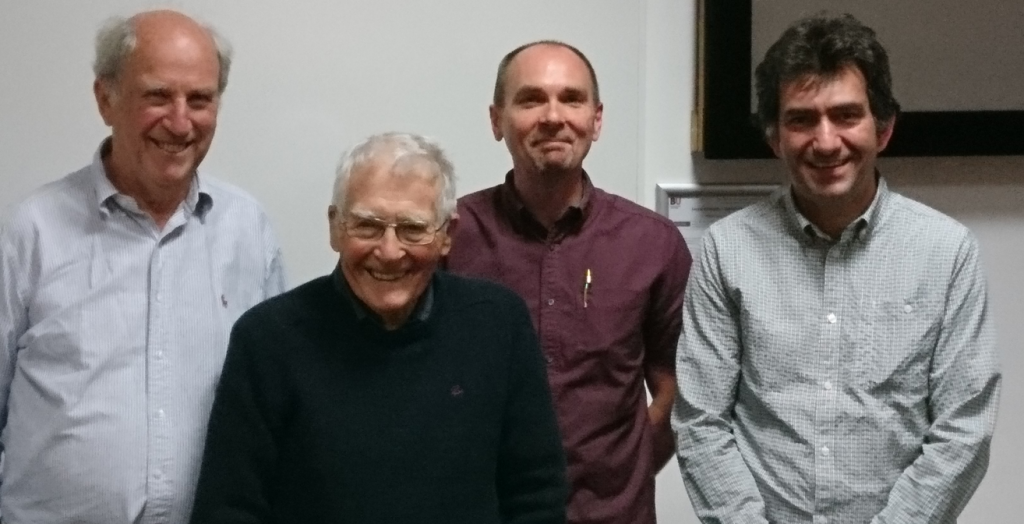
Bournemouth University was privileged to host a Q & A session with James Lovelock, who spoke to a packed lecture theatre where he delighted an audience of students, academics, university staff and local environmental practioners with insights into his life and career as a scientist.
James Lovelock CH CBE FRS is an inventor, an environmentalist, futurist and above all, one of the most influential scientists of our time. James has worked for the Medical Research Council, NASA, Harvard and Yale Universities, but is best known as an independent scientist. James’ many achievements have had a profound effect on our understanding of environment. He developed the electron capture device, which has transformed trace analysis and resulted in being able to demonstrate that CFCs were not being broken down in the environment. This led to the discovery that these chemicals were depleting the ozone layer. However, James is best known for his Gaia theory, which states that the Earth is a self-regulating living-being. This theory has and a profound effect on how we view our plant and has influenced environmental policy at an international level for decades.
Questions were plentiful and James was able to give is views and share anecdotes on a variety of subjects, ranging from where he gained inspiration for the Gaia theory to the future of nuclear energy, the possibilities of cryogenics to life on other planets. The whole audience was captivated by this exceptionally inspiring scientist and after the session James kindly spent time talking to students and signing books.
Many thanks to James for taking the time to visit us! Thanks also to Dr Iain Green and Dr David Foulger for organising such a rare treat and also to those who participated in the session making it a truly memorable occasion.
After the Olympics: stories from Rio’s sex workers
Amanda De Lisio, Bournemouth University and Michael Silk, Bournemouth University, write for the Conversation.
The vibrant city of Rio de Janiero has played host to some of the world’s best parties – from Carnival, to the 2016 Olympic Games and the 2014 FIFA World Cup. Authorities have spent billions to ready the city, and each time tourists flocked in, local businesses braced for a bumper season. But these high expectations weren’t limited to legal businesses: those working within Rio’s semi-legal, underground economies thought they would benefit too. ![]()
Nowhere is this clearer than in Centro, the downtown area of Rio, tucked in the shadow of the newly-constructed Olympic Boulevard. Once home to the historic red light district, Centro has since become the beating heart of big business, with towering office blocks bearing the names of major corporations such as Petrobras, BG, Total, Chevron, Electrobras, BNDES and Vale.
And yet, a closer look at the shop fronts suggests the presence of another kind of commerce. Here, the “termas” – saunas, complete with bar and discotheque – can be spotted near the brothels and love hotels, alongside the “privés” – massage parlours operating in rented, high-rise apartment space – that comprise the infamous commercial sex industry of Brazil. In reality, the seemingly demure finance district of the nation’s former capital has never ceased to be a hub for commercial sex.

Amanda De Lisio, Bournemouth University, Author provided
The Rose Without Thorn is nestled in a quiet lane, not far from the Saara – a street market that is usually crammed with pedestrians. It was built in 2010, shortly after Rio won the bid for the 2014 FIFA World Cup in 2007, and the bid for the 2016 Summer Olympics in 2009. As an illegal brothel operating within the financial district, it survived, even thrived, alongside the decade-long Olympic facelift. It was here that we – an international research collective, partnered with Observatório da Prostituição (Prostitution Policy Watch) – came to understand the impact of event-led urban reform on Rio’s sex workers.
Rose Without Thorn
From the outside, the house has a nondescript colonial façade. But the music, which ricochets down the narrow staircase entrance and into the street, hints at something more. Inside, working-class men perch on stools, often alone with chopp (Brazilian draft beer) in hand, while women move throughout the house in barely-there lingerie and high-heeled shoes.
One of these women is Thayna (this is her “nome da batalha”, her “battle” or work name), who has worked in the house since the age of 21. Now 24, her work is the sole source of income for her and her two children. As Pedro the manager says: “She is the breadwinner for her family, if she does not work, they do not eat”.

Amanda De Lisio, Bournemouth University
In Brazil, sex work has forever existed as a semi-legal, entrepreneurial pursuit for those in search of financial stability and social security. The profession is officially recognised by the Brazilian Ministry of Labour and Employment’s classification of occupations, which can guarantee certain social securities to those registered as a “profissionais do sexo” (sex professionals). Although the adult, consensual exchange of sex for money has never been criminalised, “houses of prostitution” are still considered illegal.
As such, places such as Rose Without Thorn operate at the discretion of law enforcement and a local elite. As Rafael, a civil servant, explained: “Prostitution in Rio de Janeiro has never occurred without the involvement of police.”
Inside the cubicle-sized office space on the third floor of the brothel, the bass of the funk music is muffled by chatter. Each “programa” (a private session) is recorded in a notebook (35 a page) by a madam perched at a desk, near the top stair. On the Thursday before carnival, she had filled a page and a half by two o’clock in the afternoon, and was hopeful for at least five more.
Post-Olympic crisis
At the time, Brazil was named as the first Latin American host of an internationally-recognised sporting mega-event, and it was on the brink of economic boom. The Lula oil field (formerly, Tupi old field) was found in 2006, off the coast of Rio de Janeiro, and with it came the promise of economic prosperity. But the nation continued to rely upon the export of raw material commodities – a temporary solution, much like the sporting mega-event – instead of establishing a more sustainable, internal economy.
The ongoing Petrobras corruption scandal deflated political-economic optimism for the future, and by 2016, the state government of Rio de Janeiro was paralysed with possibly its worst recession in history. Amid halted salaries, political tumult and severe economic debt, the promise of the boom has since been long lost.

Amanda De Lisio, Bournemouth University
But people still need to earn to survive, and for some, sex work serves as a viable option for survival. And so, the economies and social networks created around commercial sex have so far survived the fall. As Simone, 54, widower, mother of five, and madam of the house expressed: “We are family too. We live together everyday. I live more with them than my own children.” She is proud yet honest about business, during this tense time:
Rose Without Thorn is famous. It is not very fancy but it is certainly well known. It is the heart of downtown! But after the [Olympic] Games, even we started to feel the crisis. No one has the money to come like before.
Before the bust, the Olympic Games was a highly anticipated business opportunity in Brazil – a time for entrepreneurial creativity and innovation. Yet many of the sex workers who anxiously awaited the boon from foreign clientele found that it did not materialise. Only a few benefited financially from the event, while well-intentioned campaigns urged authorities to crack down on “sex tourism”. The Rose Without Thorn’s manager Pedro said:
Listen, it is an illusion that FIFA or the Olympics are good for business. This is a myth. Some of the biggest [sex-related] businesses in Ipanema went bankrupt during the games. And now it is worse. The economy is a mess, so too is the government. And it all started around the games. The Olympics did not improve the situation. It only furthered the fall.

Amanda De Lisio, Bournemouth University
Instead, what surfaced was a heightened security presence in the street, provided in part by Centro Presente – a quasi-public police force, partially funded by the local commercial and business association. Thayna explained:
Look, it was good. The city was beautiful. The party was fun. I really liked that Centro Presente provided more security in the street. But business here was not great. I expected more. I prepared for more. A lot of money was spent in a city where too many people starve. I work today to give my children a better future, not to leave my daughter in public school. Healthcare is the same. I pay for education and health insurance otherwise my daughter would be without them. To spend our money on tourist fun is hypocrisy.
During the mid-afternoon lull, Thayna ate her lunch on a twin bed. As she kicked through white rice in the foil container in search of another cut of red meat, she was bored with Olympic talk, and excited about the post-carnival time. It was the first week of the unofficial Brazilian new year, and she wanted to see her brothel with a queue. She was confident that, amid Olympic dust and carnival debris, the political-economic crisis that devalued urban land and stunted police salaries will only further cement the presence of sex workers within the city’s financial core.
Names and places have been changed to protect anonymity. The authors would like to especially acknowledge the insightful contributions of Thaddeus Blanchette (Professor, Universidade Federal do Rio de Janeiro/Observatório da Prostituição), Thayane Brêtas (Research Affiliate, Observatório da Prostituição), and João Gabriel R. Sodré (Civil Servant, Defensoria Pública do Estado do Rio de Janeiro).
Amanda De Lisio, Post-Doctoral Research Assistant, Bournemouth University and Michael Silk, Professor of Sport and Social Sciences, Bournemouth University
This article was originally published on The Conversation. Read the original article.












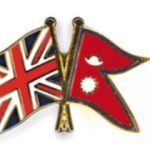 FHSS academics teaching in Nepal
FHSS academics teaching in Nepal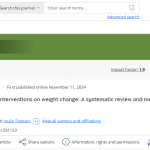 New weight change BU paper
New weight change BU paper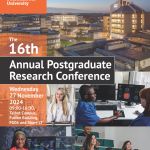 One week to go! | The 16th Annual Postgraduate Research Conference
One week to go! | The 16th Annual Postgraduate Research Conference Geography and Environmental Studies academics – would you like to get more involved in preparing our next REF submission?
Geography and Environmental Studies academics – would you like to get more involved in preparing our next REF submission?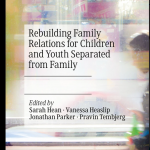 Congratulations to three former BU staff
Congratulations to three former BU staff MSCA Staff Exchanges 2024 Call – internal deadline
MSCA Staff Exchanges 2024 Call – internal deadline Applications are now open for 2025 ESRC Postdoctoral Fellowships!
Applications are now open for 2025 ESRC Postdoctoral Fellowships! Horizon Europe – ERC CoG and MSCA SE webinars
Horizon Europe – ERC CoG and MSCA SE webinars MaGMap: Mass Grave Mapping
MaGMap: Mass Grave Mapping ERC grants – series of webinars
ERC grants – series of webinars